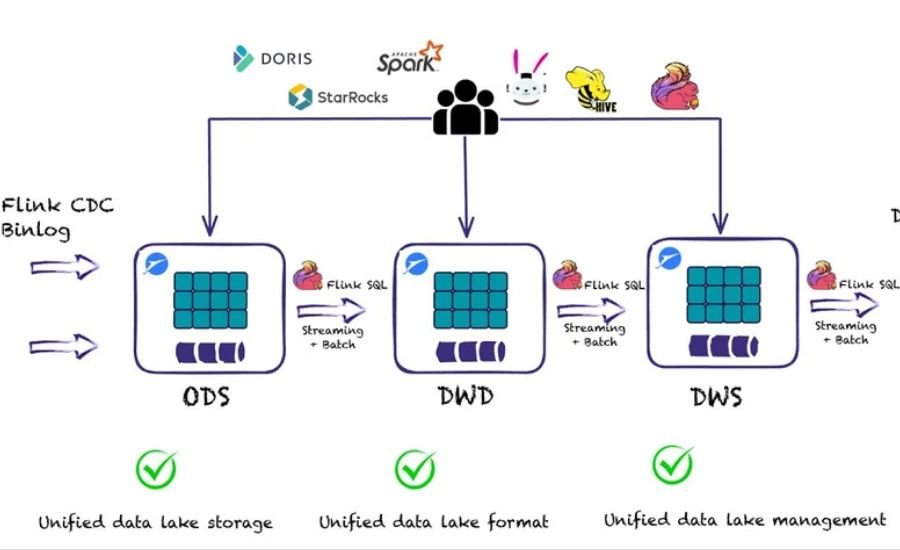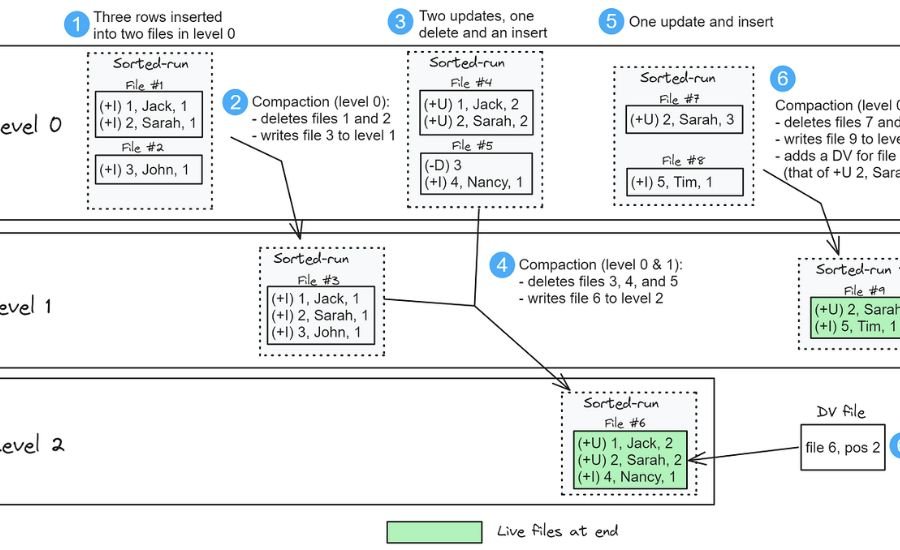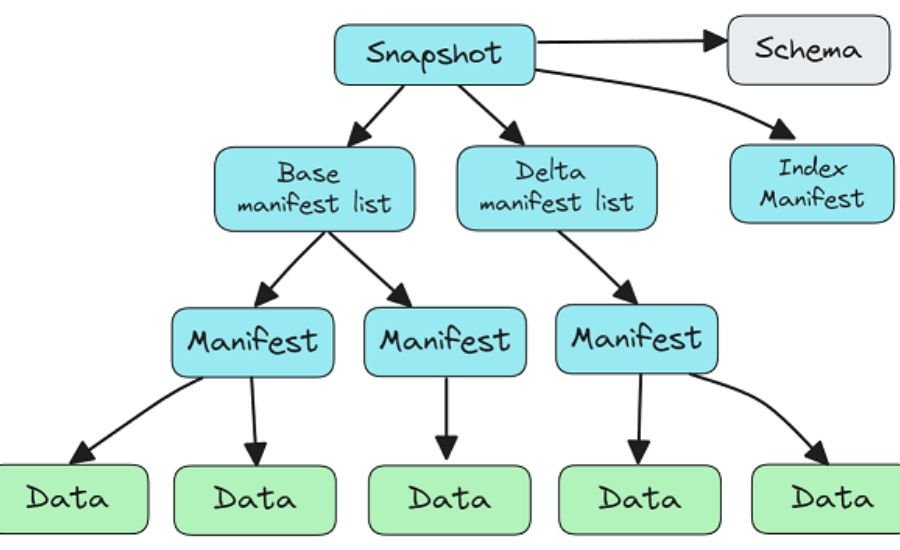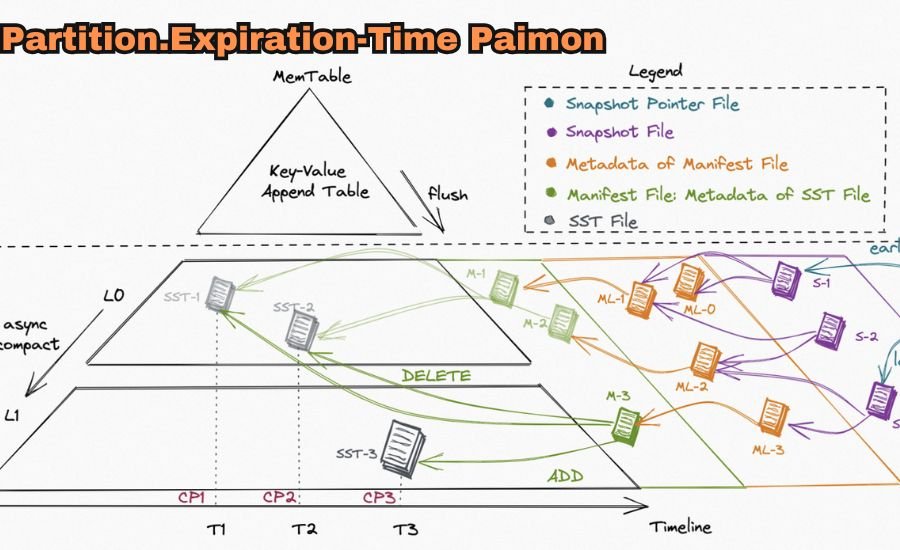Partition.expiration-time paimon is an important concept in data management, and understanding it can help keep your system clean and efficient. With partition.expiration-time paimon, you can set a time limit for how long data stays before it gets removed. This helps to keep your storage organized and frees up space for more data.
In simple terms, partition.expiration-time paimon is like setting a timer for your stored information. Once the timer runs out, the data is automatically deleted. This is especially useful for systems that need to handle a lot of information regularly, as it keeps everything tidy and helps manage storage space effectively.
What Is Partition.Expiration-Time Paimon and How Does It Work?
It is a setting for managing data efficiently. It controls how long information remains before it’s automatically deleted. This can save space and maintain smooth system operations, which is important for data-heavy systems.
To use partition.expiration-time paimon, you set a specific expiration time. When data reaches this time limit, the system removes it without needing extra commands. This keeps everything running smoothly and stops old data from piling up and slowing down performance.
It also helps prevent errors. When too much outdated data clutters storage, it can cause issues. By managing data expiration, this setting keeps systems organized and running efficiently.
Why Use Partition.Expiration-Time Paimon in Data Storage?

Using partition.expiration-time paimon in data storage keeps systems clean and free of old data. This setup can improve both speed and functionality, which is valuable for any database or storage solution.
One big reason to use partition.expiration-time paimon is to avoid filling up storage with outdated data. When unnecessary data is removed, more space becomes available for new information. This allows the system to keep processing fresh data without hitting storage limits.
Additionally, this setting helps with data security. When old data expires and is removed, there’s less risk of sensitive information being accessed later on. This adds an extra layer of protection to data management practices.
How to Set Up Partition.Expiration-Time in Paimon for Beginners
Setting up partition.expiration-time paimon is simple. To start, choose an expiration time that fits your data needs. This is the period after which data will be removed automatically, keeping storage clean.
Once you choose a time, apply it to the relevant data partitions. The system will then start monitoring this data and delete it when it reaches the set time limit. This helps keep everything streamlined without manual cleanup.
For beginners, it’s important to test the expiration time on sample data first. This ensures it’s the right choice for the system’s needs. Testing helps avoid any surprises and makes sure data management stays effective.
Partition.Expiration-Time Paimon: A Simple Guide for Data Cleanup
It simplifies data cleanup by setting an automated expiration. This tool ensures that only useful, fresh data remains, while older, outdated data is removed.
To use it effectively, choose an expiration time that suits the system’s data flow. For instance, if data becomes outdated quickly, a shorter expiration time keeps everything relevant. For less frequent data, a longer time might work better.
Using the for cleanup also reduces workload. Instead of manually reviewing and deleting old data, the system handles it automatically. This makes data management easier and frees up time for other tasks.
Read More: Apisix-302-to-k8s-service-target-port
Benefits of Using Partition.Expiration-Time Paimon in Your System
Its offers many benefits for data management. One of the biggest benefits is space-saving. By automatically deleting old data, it keeps storage available for more important information.
Another benefit is efficiency. Partition.expiration-time paimon speeds up data processing by removing data that’s no longer useful. This helps the system run smoothly and avoid slowdowns caused by overloaded storage.
Additionally, it helps with security. When data is removed after a set time, there’s less risk of it being accessed later. This is useful for protecting sensitive information and keeping systems secure.
How Partition.Expiration-Time Paimon Helps Manage Storage Efficiently

It manages storage by clearing out expired data. This ensures that only relevant information stays in the system, which keeps storage space open for new data.
Efficient storage management is important for handling large amounts of data. With partition.expiration-time paimon, systems avoid piling up old information, which can slow down processing times. The result is faster access to the data you actually need.
Additionally, this setting can extend storage life. By keeping only the latest data, it reduces the strain on storage devices, helping them work effectively for longer.
Common Questions About Partition.Expiration-Time Paimon
People often ask what partition.expiration-time paimon does and why it’s important. Essentially, it’s a tool for automatic data deletion, removing data after a set time to save space.
Another question is about how to choose an expiration time. The right time depends on how quickly data becomes outdated. Short times work for fast-paced data, while longer times are better for data that stays relevant.
Lastly, people wonder if is safe. Yes, it’s a reliable tool, especially if tested first. Just be sure to set it up according to data needs.
Partition.Expiration-Time Paimon for Better Data Organization
Data organization is simpler with partition.expiration-time paimon. It automatically clears data that isn’t needed anymore, which keeps things organized without extra work.
When data is well-organized, it’s easier to find and use the information you need. Partition.expiration-time paimon helps by removing irrelevant data, leaving only what’s useful in storage.
Using this setting also makes storage management less complicated. It’s an easy way to avoid a buildup of outdated data, making sure only the most current information is kept.
Step-by-Step Guide to Setting Partition.Expiration-Time in Paimon
To set partition.expiration-time paimon, first choose the expiration time that best fits your system’s data flow. Once you’ve decided, apply the setting to your data partitions.
Next, monitor how the expiration works. Watch how it affects data management and make any adjustments as needed. It’s important to make sure it’s working the way you want.
After setup, check on data periodically to see the results. Fine-tuning is easy if you keep an eye on how it impacts your data storage.
How Partition.Expiration-Time Paimon Impacts System Performance

Partition.expiration-time paimon can greatly improve system performance. By clearing old data, it frees up space and prevents the system from becoming overloaded.
With less data to process, systems work faster and with fewer errors. Partition.expiration-time paimon reduces the chance of slowdowns, which can happen when there’s too much information.
Overall, it keeps performance steady and responsive, even with large amounts of data. Systems stay efficient, and users experience faster load times and smoother operations.
Partition.Expiration-Time Paimon: Key Tips for Effective Data Management
For effective data management, partition.expiration-time paimon is a valuable tool. Set the expiration time carefully, choosing one that suits your data needs.
It’s also helpful to review your setup occasionally. Check how the expiration time is working and adjust if necessary. Fine-tuning makes sure data management stays efficient.
Using partition.expiration-time paimon alongside other management tools can enhance results. Combine it with regular backups and security measures for the best data practices.
Troubleshooting Partition.Expiration-Time Paimon Issues in Data Systems
If issues arise with partition.expiration-time paimon, start by checking the expiration time settings. Sometimes, adjusting the time can solve minor problems.
Another common fix is to restart the system after making changes. This can help refresh the settings and apply any updates. Regular checks help catch small errors early.
Lastly, contact support if issues continue. They can provide guidance on any unusual errors, making sure partition.expiration-time paimon works smoothly in your setup.
Conclusion
Partition.expiration-time paimon is a great tool for keeping data storage clean and easy to manage. By setting an expiration time, you make sure that only important information stays in your system. This helps keep storage space free and speeds up system performance, making it a smart choice for anyone managing large amounts of data.
Using partition.expiration-time paimon also keeps data safe by removing information that’s no longer needed. This helps protect against old data cluttering up storage and makes sure systems work efficiently. For anyone looking to simplify data management, partition.expiration-time paimon is a helpful and reliable tool.
Be sure to know: Bachgold-water-bottle-always-leaks-when-putting-in-inner-sleave
FAQs
Q: What is partition.expiration-time paimon?
A: Partition.expiration-time paimon is a setting that automatically deletes old data after a set amount of time, keeping storage organized.
Q: Why is partition.expiration-time paimon important?
A: It helps manage storage space by removing outdated data, making systems faster and more efficient.
Q: How do I set an expiration time?
A: Choose a time that fits your needs, then apply it to your data partitions so that data automatically deletes when it expires.
Q: Can partition.expiration-time paimon improve security?
A: Yes, it reduces the risk of old data being accessed, adding an extra layer of security to data management.
Q: How does it help with system performance?
A: By clearing out old data, it reduces storage load and keeps systems running smoothly without slowdowns.
Q: Can I change the expiration time later?
A: Yes, you can adjust the expiration time whenever needed to better fit your data requirements.
Q: Is partition.expiration-time paimon safe to use?
A: Yes, it’s a safe and helpful tool, especially if tested first to make sure it’s set up correctly.
